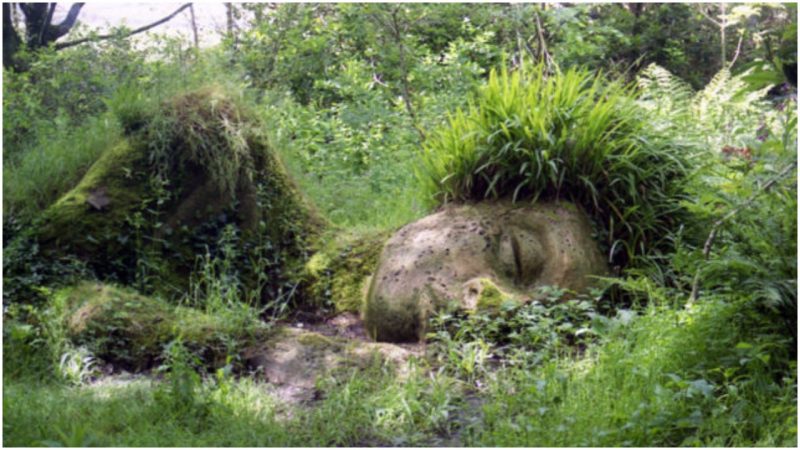While some of the earliest examples of cultivated gardens can be traced to the Ancient Egyptian and Mesopotamian civilizations, the origins of the modern botanical garden is in medieval Europe. In Italy, during the period of the Italian Renaissance, the first medicinal gardens dubbed “physic gardens” started to blossom throughout the 16th century. In fact, much earlier, the Romans were known to be keen gardeners, aware of the numerous medicinal benefits certain plants can bestow.
During the 18th century, the British set up the Calcutta Botanic Gardens, a type of tropical garden. Their principal purpose was to cultivate crops such as tea, coffee, palm oil, and chocolate for mass consumption. The French had their own variant of such gardens in Mauritius and the Spanish in Tenerife. Nevertheless, it is wrong to assume these type of gardens were botanic gardens in the real sense of the word.
By the 19th and 20th centuries, the first municipal and civic gardens started emerging across the European continent, and these gardens largely fulfilled the simple purpose of pleasure. People were keen to enjoy them and loved spending idle time in the garden, with a picnic or taking a walk.
Which brings us to the story of the historical Lost Gardens of Heligan, today one of the most prominent botanical gardens in the United Kingdom. For decades before the site was unveiled to the public in 1992, the Gardens of Heligan had been sitting neglected and abandoned. A majestic site, unseen and forgotten.
The story of the Lost Gardens of Heligan commences with Heligan House, home of the Tremayne family in Cornwall. Situated near Mevagissey, the original house that occupied the property was built in Jacobean style. Today, it is only the basement of the edifice that retains that style. As historical records tell, the house was purchased by Sampson Tremayne in 1659 and after some period of time the house underwent rebuilding. New rooms and facilities were further added to the house in 1810, and more extensions followed in 1830. The name Heligan was picked from a local Cornish word, “helygen,” that actually means willow tree.
Positioned on top of a hill that overlooks Mevagissey village, what is less typical for this region is that the house is built of brick. Starting from the house and moving down the hill is the most remarkable part of the entire estate: its gardens.
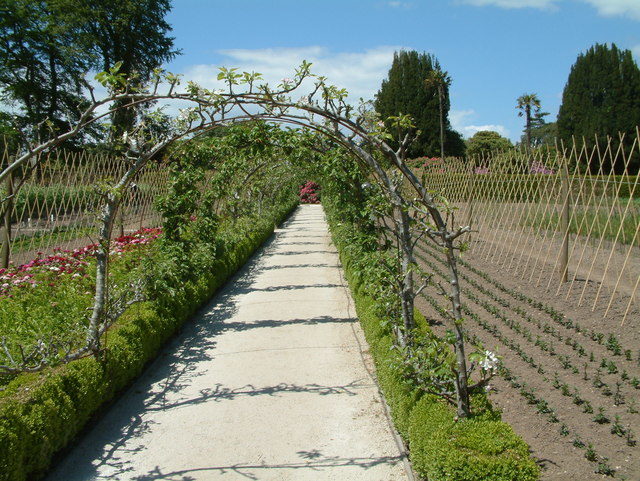
Before World War One took its toll, there were 22 gardeners employed at Heligan. But in 1916, only eight men remained to maintain the gardens. The others left to fight in the war and never came home. Its then owner, Jack Tremayne, opted to live in Italy once the war was through and had the Cornwall property leased out. For the bigger part of the 20th century, the beautiful house and its gardens was occupied by others. It was also used by the US Army throughout World War Two.
By the 1970s, more changes took place at the property. This time the house was changed into flats. Without proper care, the gardens continually deteriorated until they were under the serious threat of being lost perhaps forever.
Following Jack Tremayne’s death, the family home went into the ownership of a trust associated with several members of the extended Tremayne family. One of them was John Willis, who happened to live in the area and who also happened to introduce Tim Smit to the gardens. Which is when everything changed for good.
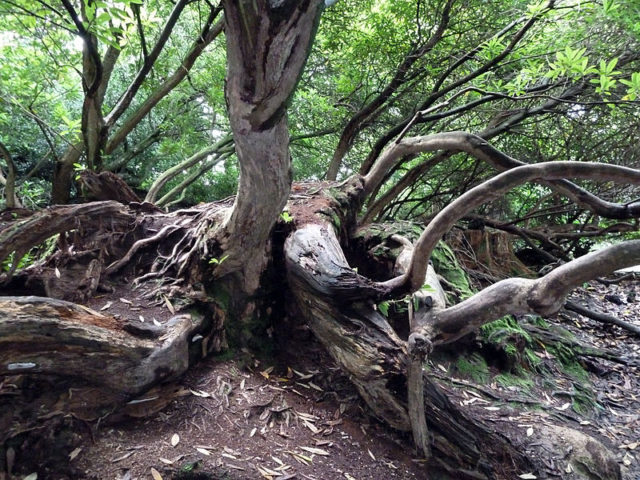
Smit is perhaps most famous for his work on the Eden Project, likely the biggest indoor rainforest in the world that can be seen in Cornwall too. But one more astounding project for which he takes credit is the Heligan gardens. As the story goes, as soon as he saw the lands at the Heligan property, he fell in love. With the help of few other friends and enthusiasts, Smit worked on restoring the gardens and bringing them back to their former glory. The entire effort eventually paid off and when it was unveiled in 1992, the Heligan site quickly went on to become one of most prominent botanical gardens in Britain.
The paths snaking through the gardens were first laid there probably two centuries ago. Scattered over an area of 200 acres, the garden incorporates a number of greenhouses. It has some of the most amazing and exotic trees around, and also several lakes which are fed by a pump more than 100 years old. One of the many prominent features of the garden, the Italian gardens, was probably first cultivated because of Jack Tremayne who had a huge love of Italy.
Annual and perennial plants, some maze hedges, and astounding Rhododendron and Camilla shrubs overwhelm the Flower Garden of the estate. Gigantic rhubarbs, living tunnels of bamboo, as well as some banana plantations, lurk hidden in the garden’s exotic outdoor jungle, which is perhaps one of the most bewildering spots where visitors can wander around with their imagination.
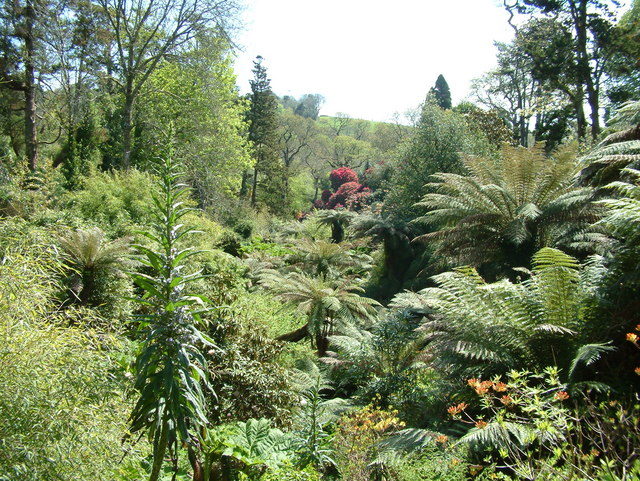
The Woodland Walk is another spectacular corner of the gardens that keeps some of the most popular statues scattered around Heligan. The Mud Maids are large statues of reclining women that add a sense of mysticism as they blend into the ground at different stages. Covered with moss and lichens, the Mud Maids are all uniquely beautiful. There are also the Giant’s Heads, work of the sculptor Susan Hill. These statues appear to be buried up to the bottom of the ears. The eyes are painted and also the skin covered with moss. The Giant’s hair is fantastic, composed of various types of plants growing atop the heads.
Plenty more gardens that can be explored on the site are the Lost Valley, the Melon Yard, and Stewart’s meadow. Or maybe the pineapple pit, which is actually warmed by rotting compost and hardly is there any other such pineapple pit to be seen elsewhere in Europe.
Domesticated animals add to the mood of the property: chickens, turkeys, ducks, geese, and even pigs and cattle. There is also the wildlife: all the different song birds, the barn owls, bee hives, frogs, squirrels and chipmunks among others.
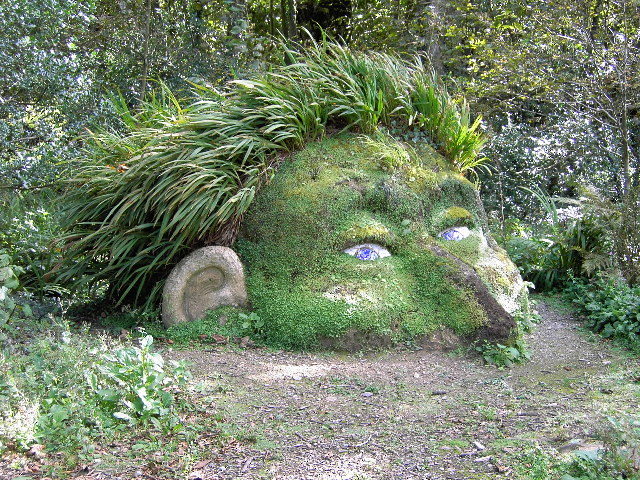
The Thunderbox room is a memorial to the original gardeners from the times before the war. It tells a little bit of the history and here can be found their names listed on a plaque. More facilities such as a kitchen and a bakery supply the tea room with some homemade domestic items straight out of the gardens.
Twenty-five years after the Lost Gardens of Heligan were first opened to the public, they resemble a pioneering project, a place to enjoy, where everyone can come and build a genuine and intimate relationship with the nature, far away from the bustling city life.
